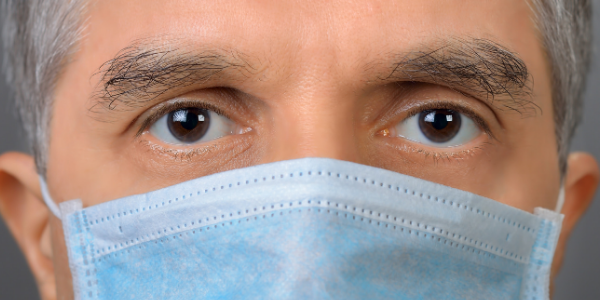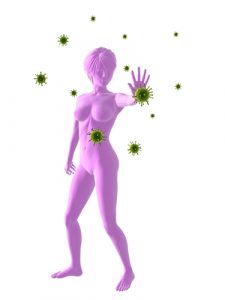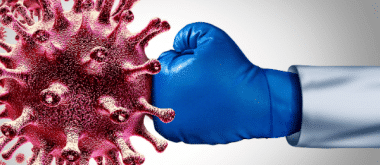The new coronavirus that causes COVID-19 infected men and women worldwide in roughly equal numbers. Despite the equality of infection rates, more men suffered hospitalization and death. Some researchers believe sex hormones may explain the different rates of severe cases and deaths in men and women. Interestingly, the disparity in death rate in COVID-19 cases remains consistent throughout age groups.
The Virus Infects Genders Equally but Kills More Men
According to Global Health 50/50, SARS-CoV-2, the virus that causes COVID-19, appears to infect men and women at equal rates. However, charts by country show that regardless of the rate of infection in men and women, the percentages of death in most countries remain higher for men than for women. For instance, in Costa Rica, men account for 53 percent of the cases and 90 percent of the deaths. In the Netherlands, men account for 37 percent of the cases and 55 percent of the deaths. The Czech Republic has a 50/50 infection rate in men and women, but men account for 59 percent of the deaths.
Only in five countries studied by Global Health 50/50 do women make up more than 50 percent of the deaths, and in each of those countries, women also accounted for more than 50 percent of cases that were positive for SARS-CoV-2.
Another study found that the men’s percentage of deaths caused by COVID-19 remains consistent across age groups. Men make up 78.5 percent of deaths in the 50-to-59 age group, 79.7 percent in the 60-to-69 age group, 79.6 percent in the 70-to-79 age group and 66.9 percent in the 80-to-89 age group.
 Potential Causes of COVID-19 Gender Disparity
Potential Causes of COVID-19 Gender Disparity
Studies show that female immune systems provide more robust defenses against bacteria and viruses. Females produce a stronger inflammatory response to combat viral infection, rendering them less susceptible to a viral illness. This same mechanism makes women more susceptible to certain medical conditions, including migraines and autoimmune conditions.
The ACE-2 receptors in lung cells hold interest for researchers. ACE-2 receptors provide a port of entry for the COVID-19 virus. Research on other conditions shows that men have a higher expression of ACE-2, and estrogen reduces the expression of ACE-2 receptors.
Men also have higher rates of heart disease and diabetes than women. These conditions lead to higher mortality risk from COVID-19.
The Role of Sex Hormones in COVID-19 Outcomes
Researchers now believe that sex hormones may influence the seriousness of COVID-19 symptoms. Some doctors believe that high levels of androgens—hormones that regulate the expression of male traits—may make men more susceptible to death or severe illness after developing COVID-19.
Two studies from Spain found that hospitalizations included a disproportionately higher number of bald men. High levels of dihydrotestosterone (DHT) closely correlate with male pattern baldness, and DHT is a derivative of testosterone.
An Italian study found that COVID-19 mortality rates were higher in cancer patients than non-cancer patients. However, the study found that men receiving androgen-deprivation therapy, a standard treatment for prostate cancer, experienced less serious symptoms and lower death rates than other cancer patients. Researchers now must consider whether reducing androgen expression early in the COVID-19 process can reduce case acuity. Clinical trials using androgen suppression as treatment are underway.
Estrogen as a Treatment for COVID-19
Clinical trials now feature the use of estrogen to reduce the severity of COVID-19 symptoms. A clinical trial that’s in its second phase is using the estrogen patch Climara to test whether estrogen may prevent hospitalization and death if it is administered soon after the infection. With the introduction of these sex hormones, the study hopes to help provide the protection for men that women appear to possess naturally.
Two other clinical trials will determine whether the sex hormones estrogen and progesterone reduce the severity of COVID-19. The estrogen study will determine whether estrogen can decrease the rate of hospitalizations and deaths and help the body clear the infection. The progesterone study will determine whether progesterone’s anti-inflammatory properties will help prevent a cytokine storm, lessening the severity of COVID-19.
Final Thoughts
Gender-based differences exist in the acuity of COVID-19 cases in men and women. These differences remain consistent across all age groups. Preliminary research indicates that sex hormones significantly influence the extent of COVID-19 disease outcomes in both men and women. Further research may lead to promising therapies to reduce hospitalizations and death from COVID-19.

 Potential Causes of COVID-19 Gender Disparity
Potential Causes of COVID-19 Gender Disparity



